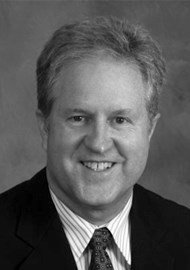The United States Department of Defense (DoD) has been an effective partner in many of our current medical technology advancements, from the surgical robot, to improved clotting wound dressings, to better blood products. For the otolaryngology and audiology entrepreneur looking to partner with the US department of defense the best source is www.grants.gov.
This site is a repository for current grant opportunities for both military and non-military US government sources. These grant opportunities can involve classic bench research, such as regeneration of cochlear hair cells in an animal model, to developing a better ear plug that not only protects against acoustic trauma and blast injury but enhances hearing for the normal ear in the combat situation.
One commonly utilised funding source for the provider to target specific entrepreneurial solutions for the military is the small business innovation research (SBIR) and small business technology transfer programme (STTR). The SBIR is more commonly utilised because the STTR requires partnering with a research institution, where the SBIR does not. Phase one funding is $150,000 for SBIR and $100,000 for STTR. Phase one funding is for building a workable prototype or at least showing your idea will work. While the number of phase one projects that can be funded is generally dictated by the number of good ideas rather than a set number, usually a number of phase projects will be funded with a short six month timeline. Depending on the stage of development of their device, entrepreneurial investigators typically feel the need to try and gather clinical data but that is generally not advisable in phase one due to the short six month funding period.
It is extremely difficult to get institutional review board (IRB) approval in this time frame and the study must be approved by DoD IRB, not just a local institutional or commercial IRB. If the project is selected for phase two, the investigator will have two years and up to $1,000,000 dollars in funding to run clinical trials and develop a mature device that can be carried to phase three. Phase three may be funded through non-SBIR governmental funding but involves the investigator to pursue commercialisation of their mature device typically through partnering with non-government commercial sources. There are specific requirements of eligibility for these SBIR / STTR grants which involve being a small company that is 51% owned by a US citizen. The government website www.sbir.gov is well organised and provides further detail.
“When developing a clinic research project with the DoD, one of the common misconceptions is that researchers will have complete access to active duty military personnel as research subjects.”
Congressionally Directed Medical Research (CDMRP) funding has been a source for funding large research and development efforts in the past. The CDRMP website (www.cdmrp.army.mil) shows current research opportunities under regenerative medicine for craniofacial regeneration of both bone and soft tissue, and under neurosensory loss for both applied research (which includes new products) and clinical research in the areas of hearing loss, balance and tinnitus. Funding is up to $2.5 million for a four year effort. While receiving a large award such as this is certainly desirable, most research is funded at a more modest level through Broad Area Announce-ments (BAAs), which you will find on the grants.gov website. These target single investigator efforts at $100,000 – $200,000 over three years. Key organisations that generate these BAA-based need assessments include the Army Medical Readiness and Material Command (USAMRMC) and the Office of Naval Research (ONR) who have websites at mrmc.amedd.army.mil and www.onr.navy.mil. The level of funding is dictated by congress and budget constraints so varies from year to year. Should you choose to delve deeper into these two previous websites you will find there is not a specific section of the DoD that handles otolaryngology and audiology. The closest organisation is on a separate website and is the DoD Hearing Center of Excellence (www.hearing.health.mil) which is clearing house for coordinating research, education and product development in the areas of hearing, balance and tinnitus. For other areas of our speciality, you will need to look for the area that closest approximates your area of interest. The USAMRMC web site has a link entitled ‘Work With Us’ that is a good start for general information. Part of USAMRMC, the Telemedicine and Advanced Technology Research Center (TATRC) runs the AMEDD Advanced Technology Initiative programme (AAMTI), which can be a source of funding in the $100,000-$250,000 range for specific products that provide solutions for military medicine (www.tatrc.org).
When developing a clinic research project with the DoD, one of the common misconceptions is that researchers will have complete access to active duty military personnel as research subjects. While the war in Afghanistan is drawing to a close, active military are generally fully engaged in war fighting or preparing for war fighting. They are often not readily available for participation for phase one and phase two clinical trials. This doesn’t mean there is not the opportunity to do research involving active duty military personnel, only that there are often more restrictions and limitations rather than less. Finding an active duty otolaryngologist or audiologist with whom to partner or at least discuss the feasibility of your study or device is likely to be helpful. They are typically easy to spot in their uniforms at national meetings but also can be contacted through the Society of Military Otolaryngology (www.miloto.org), the Trauma Committee of the American Academy of Otolaryngology-Head and Neck Surgery and the Military Audiology Association (www.militaryaudiology.org). The Annual Military Health System Research Symposium (MHSRS), typically held in Florida each summer, is another good opportunity to meet military medical researchers across a breadth of medical specialties.
Declaration of Competing Interests: The views expressed are those of the author and do not reflect the views of the Department of the Defense.




